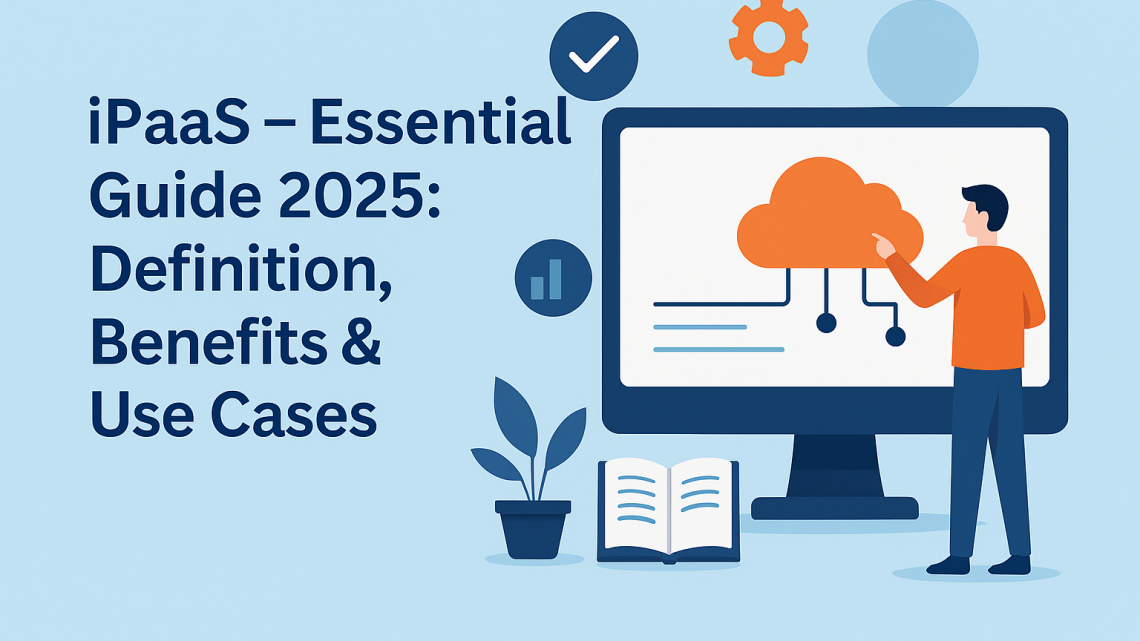TL;DR (Key Takeaways)
iPaaS is a cloud integration layer that connects databases, FTP/SFTP, webhooks, WebSockets, REST/SOAP/GraphQL APIs and applies mapping, transformation, cleaning, wrangling, business rules, monitoring, and security so data moves reliably between on-prem and cloud systems—with less custom code and better governance.
What is iPaaS?
Integration Platform as a Service (iPaaS) centralizes connectivity and data movement across your application landscape. Instead of one-off scripts and point-to-point integrations, iPaaS offers prebuilt connectors, low-code mapping, policy-driven orchestration, and observability—so teams ship integrations faster and keep them healthy at scale.
Why iPaaS matters?
- Hybrid is the norm: SaaS + legacy on-prem must interoperate securely.
- API-first world: REST, SOAP, GraphQL, webhooks, and WebSockets demand a unified strategy.
- Trust & compliance: Central secrets, audit logs, PII handling, and regional hosting.
- Speed to value: Prebuilt connectors and low-code GUIs outpace bespoke code.
Core capabilities
- Connectivity: Databases (Oracle/MSSQL/Postgres), files (FTP/SFTP), queues, webhooks/WebSockets, REST/SOAP/GraphQL.
- Transformation & quality: JSON↔XML↔CSV conversions, mapping, lookups, validation, deduplication, masking.
- Business logic: Rules, branching, compensation, idempotency, backoff/retries.
- Operations: Dashboards, run history, DLQ/replay, CI/CD across Dev/QA/Prod.
- Security: OAuth2/OIDC, TLS, RBAC, IP allowlists, key vaults, audit trails, data residency.
How iPaaS works?
Trigger an integration (event/schedule) → Ingest via connector/API/JDBC/file → Transform (map, clean, validate, enrich) → Route (apply rules; call targets; write to DB/warehouse) → Monitor (metrics, alerts, replays, SLAs).
Common use cases
- Order-to-cash: Shopify → ERP → WMS → Finance (invoice/settlement).
- Customer 360: CRM + Support + Billing → Warehouse → BI dashboards.
- Marketplace ops: Amazon/Walmart SP-API → ERP for listings, inventory, settlements.
- Healthcare: HL7/FHIR normalization and secure routing across EHRs.
iPaaS vs Workflow Automation
- iPaaS: Enterprise integration, deep transformation, DB/file connectivity, SLAs.
- Workflow automation: Deterministic API-to-API task sequencing for routine processes.
Evaluation checklist
- Connector coverage
- Depth of transformation
- Observability (DLQ/replay/tracing)
- Throughput/latency SLOs
- Security certifications
- Regional hosting
- Pricing at scale
- Extensibility (SDKs/webhooks)
- Vendor roadmap & support.
Implementation best practices
- Design data contracts and shared schemas up front.
- Use idempotency keys and correlation IDs for safe retries.
- Standardize error taxonomy (client/server/transient/validation).
- Track success %, latency p50/p95, reprocess %, and incident MTTR.
For more information, visit:
Workflow Automation
AI Workflow Automation
AI Agent
Agentic AI
iPaaS with eZintegrations™
If you’re building a dependable integration backbone—connecting databases, FTP/SFTP, webhooks, WebSockets, and REST/SOAP/GraphQL APIs while applying business rules, transformations, cleaning, and wrangling—eZintegrations™ is purpose-built for the job. It unifies low-code design, deep transformations, hybrid connectivity, DLQ/replay observability, and enterprise-grade security so you deliver faster with fewer failures and cleaner data.
Next Steps:


